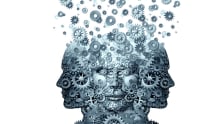Capability building in the ASEAN marine sector

With digitization taking over every industry, it has taken over the marine industry as well. The entire process of work in the maritime sector has transformed the shipping technology so much so that upskilling the existing workforce has become an urgent requirement in order to secure their future.
The leaders in this industry, especially in the ASEAN region have taken significant steps in order to build new connections and develop their respective countries. The ASEAN Foreign Ministers’ Retreat, the commemorative summit with India, an informal defense ministers’ meeting with China, and Asean Defence Ministers’ Meeting Retreat focused on harnessing technology and skills from across the globe in order to build a stronger marine industry.
According to the ASEAN annual review report of 2017-2018, “during the period under review, the Association of Southeast Asian Nations (ASEAN) witnessed unprecedented developments in some parts of the world that marked a turning point in the current global trajectory.
As per Esben Poulsson, Chairman of the International Chamber of Shipping and Enesel Pte Ltd, and President of the Singapore Shipping Association (SSA), a key challenge facing the maritime industry today is that leaders need to ensure that existing staff are given the necessary training and upskilling needed to use new technologies comfortably in the industry.
The maritime ASEAN is coping with the intensifying power rivalries in the region. There are some significant concerns over the persistent militarization activities in the disputed waters. All these underlying behind the development of the region, it continues to face s
trategic uncertainties resulting from numerous security challenges due to acts of terror as well.
Idea of Inclusivity
According to Chris Hayman, Chairman of Seatrade UBM EMEA, "We need to have a good understanding of the new skills needed in the industry and more importantly, where talent with these skills can be found so that we can be well-placed to attract them to work for our changing industry."
ASEAN's idea of inclusivity is based on getting together all ASEAN and extra-regional players by giving each one of them a real stake in the region for peace and stability. This norm works well when it comes to maritime security capacity-building in Southeast Asia; maintaining good order at sea, safeguarding the marine commons and ensuring freedom of navigation, which is everyone’s responsibility, both coastal and user states. The Malacca Straits patrols and the latest Sulu-Celebes Seas trilateral cooperative arrangements show that ASEAN governments regard policing the waters as first and foremost the primary responsibility of coastal states. Extra-regional actors are welcome to offer financial, technical and training aid.
Measures
- One can create more traditional patterns of joint training and exercises along the lines of the Singapore-India Maritime Bilateral Exercise (SIMBEX), involving navies and coastguards.
- At the smaller Indian Ocean neighbors as part of the overall response to China’s increasing presence in the region the latest Sambandh Initiative and Mobile Training Team (MTT) program are targeted. Sambandh initiative is a naval exercise, where 10 nations of the Indian ocean region participate in a bid to counter the growing influence of China. MTT is a Defence Security exercise where a team of personnel is on temporary duty on foreign land to train foreign personnel in operations, military operations, maintenance and other support of weapon system and support equipment.
- Extending these programs to the ASEAN region is expected to be more fruitful by the government.
- Instead of credit extension, it would be more feasible to have a structured program aimed at South and South-East Asia along the lines of Australia’s Pacific patrol boat program.
- India could also leverage its space technology strengths, especially remote-sensing capabilities for maritime domain awareness.
The unmatched development in the ASEAN region is not limited to one sector or field. In this age of digitization, all sectors are starting to realize the urgent need of either upskilling existing employees or hiring someone from outside who possesses the required skill set. Digitization and automation is an unstoppable phenomenon demand continuous capacity building. In the marine industry, the growth of the ASEAN region has caught the attention of foreign competitors, thus creating security problems. This results in a requirement of skillful staff in the marine sector to defuse the problem without creating more trouble.







